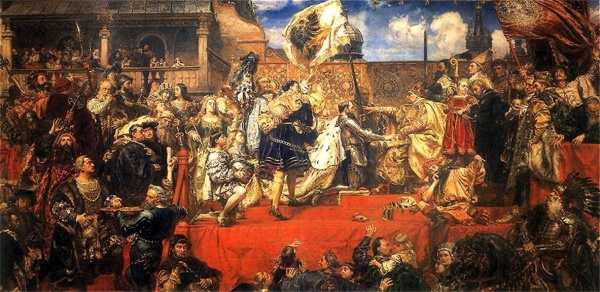Facts About Prussian Homage
"Prussian Homage" an exquisite oil painting by Polish artist Jan Matejko, was completed between 1879 and 1882 in Kraków. This captivating piece immortalizes a pivotal moment in Polish Renaissance history: the 1525 event in which Albrecht Hohenzollern, Duke of Prussia, paid tribute to King Sigismund I the Old in Kraków.
Matejko's painting is more than just a historical representation; it’s a celebration of Polish culture and the splendor of its monarchy. The artist incorporated over thirty significant figures from the Polish Renaissance, even including some who were not present at the actual event to enhance the narrative. Through this work, Matejko both glorifies Poland's past and subtly critiques its later struggles, particularly the partitions perpetrated by powers like Prussia in the late 18th century.
The painting conveys a dual message: while it commemorates a historic Polish triumph, it also hints at darker times ahead, suggesting the victory might be ephemeral. Matejko aimed to remind viewers of Poland's turbulent history and fluctuating fortunes. Despite its strong pro-Polish sentiment, which even elicited objections from German Emperor William I, the painting survived Nazi efforts to obliterate Polish cultural artifacts during World War II.
"Prussian Homage" has been exhibited in various cities and is now proudly displayed at the National Museum in Kraków. It has undergone several restorations to preserve its original beauty and detail. Today, it stands as one of Matejko's masterpieces, intricately depicting a significant moment in Polish history with rich symbolism and meticulous detail.
The painting's significance lies in its portrayal of a historical triumph over Prussia while foreshadowing future hardships through the gestures and expressions of the characters. It has been the focus of numerous art historical studies and reinterpretations, showcasing its complexity and depth. Matejko's keen eye for detail and his inclusion of various historical figures and symbolic elements make "Prussian Homage" a richly layered artwork, weaving together the threads of Polish history and political intrigue.

 Czech Republic
Czech Republic